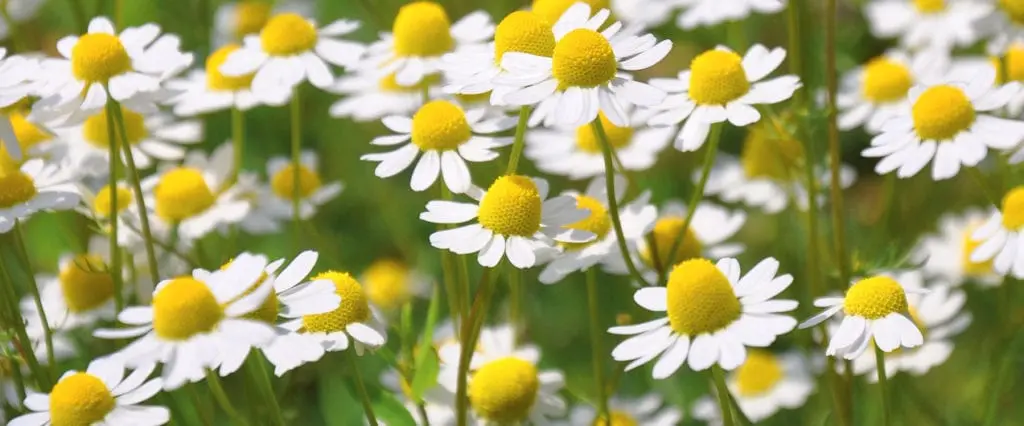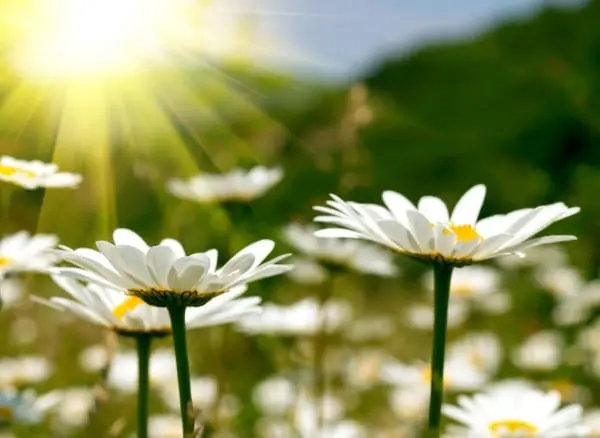Contents
Description
Chamomile is one of the most popular medicinal plants found in temperate latitudes. It has been used since ancient times for the treatment and prevention of many diseases.
The chamomile genus unites 20 species of herbs, among which the most famous is chamomile, which belongs to wild plants. When harvesting, plants with a stem 20–40 cm long should be preferred.
The pharmacy chamomile, which can be recognized by the conical shape of the head of the flower basket, has many small flowers. The plant propagates through small seeds.
Botanical characteristic
Chamomile has a straight, cylindrical, bare stem from 15 to 50 cm high. The leaves of the plant are alternate, twice or three times pinnately dissected into thin thread-like segments.
Flowers are small, gathered in baskets at the ends of the stem. The marginal flowers are white, ligulate, pistillate. The middle flowers are yellow, bisexual, tubular. The fruit of chamomile officinalis is an oblong achene without a tuft.
What substances are contained in the extract?
Usually, for the preparation of tinctures and chamomile extract, the flowers of this plant are taken. The maximum concentration of valuable compounds is observed in them, such as: vitamins, polysaccharides and carotenes; bioflavonoids; coumarins and polyins; various organic acids; phytosterol; proteinaceous and tannins;
Attention! From the dried inflorescences, an essential oil is produced that contains chamazulene and has an antihistamine effect, as well as being able to help with inflammation and kill bacteria.
Chamomile Benefit
Funds containing chamomile are pronounced antispasmodics. Their use gives a mild sedative and antidepressant effect. For therapeutic purposes, as well as for prevention, infusion, essential oil and tea from dry inflorescences are used.

Their use is recommended for the following health conditions:
bacterial lesions or inflammatory diseases of the epithelium;
problems in the functioning of the biliary system;
Acute respiratory infections, accompanied by cough, swelling of the mucous membranes and spasms;
lesions of the gastric mucosa; sleep disorders and anxiety;
inflammation of the genitourinary system.
Chamomile also helps relieve toothaches and headaches. The course of treatment should not exceed three months, although addiction to the active substances contained in chamomile is usually not observed.
Chamomile broth, infusion and tea
Chamomile decoction is prepared from 4 tbsp. l. dry raw materials, which are poured into 300 ml of boiling water and heated in a water bath for 30 minutes. Then it is filtered and the plant mass is squeezed out.
Attention! The broth is taken orally in the amount of ½ tbsp. three times a day after meals. A little honey can be added to improve the taste. The infusion is prepared, the bay is 4 tbsp. l. dry flowers 200 ml of boiling water. Then the composition is insisted for 3 hours in a thermos and filtered. It is consumed 2-4 times a day in an amount of 50 ml per dose.
Chamomile tinctures are taken orally to treat diseases such as:
- astritis, colitis, diarrhea, enteritis and other gastrointestinal diseases;
- liver pathology and dysfunction;
- increased gas formation;
- ARI.
They help alleviate the following conditions:

- painful periods;
- poor appetite;
- insomnia;
- emotional and mental stress;
- irritability.
Chamomile infusion can be applied externally for the following problems:
- inflammation of the oral cavity as a rinse or rinse;
- burns, poorly healing wounds, frostbite, erosion and dermatological problems as a composition for compresses;
- inflammation of the hemorrhoids;
- increased sweating of the feet and palms;
- acne and acne.
Attention! Chamomile tea is prepared without boiling the flowers. 1-2 tsp dry raw materials pour 200 ml of boiling water and insist for 7-10 minutes. Then the composition is filtered and drunk, sweetened with honey or without additives.
Chamomile essential oil
This tool is used for aromatherapy. It can also be taken internally or externally. You should first make sure that a person does not have an individual intolerance to the substances present in the composition of chamomile essential oil. Otherwise, you may harm your health.
Chamomile Pharmachologic effect
They have antispasmodic, analgesic, anti-inflammatory, antiseptic, diaphoretic, choleretic, sedative effect, reduce allergic reactions, increase the secretory activity of the digestive glands.
Features of collecting chamomile
Chamomile flowers are harvested when the petals of the plant have fully opened and taken a horizontal position.

When the flowers have not yet opened, chamomile does not have enough healing properties and a low concentration of essential oils, and when they have dropped, they can crumble when dried.
When chamomile flowers have blossomed, they need to be prepared within 3-5 days.
The collection is carried out in dry weather with hands, combs or special machines. You need to pick flowers as close to the base as possible or in such a way that the length of the remains of the peduncles is no more than 3 cm.
Flowers are folded in baskets or bags. On the same day, as soon as possible after harvesting, it is necessary to organize the drying of raw materials.
Chamomile Use in cosmetology
The beneficial properties of chamomile are not limited to the medical field. They are actively used in cosmetology and health systems.
Chamomile flowers are part of the slimming preparations.
Chamomile flowers are used for bathing with exhaustion, general malaise, skin rashes. Regular washing with infusion helps with acne.
Chamomile flowers for facial skin are a source of vitamins; they smooth wrinkles, tone up, relieve inflammation and irritation, heal wounds.
Chamomile flowers are good for hair: to stop hair loss, give shine and a deep golden color, they are used as a rinse, mask, or added to a detergent.
Contraindications for use during pregnancy

You should refuse to take chamomile if:
- stomach ulcers;
- antacid gastritis;
- a tendency to diarrhea;
- mental disorders;
- acute diseases of the bladder and kidneys;
- a tendency to allergies caused by the main chemical components of the plant.
Pregnant women can use chamomile, but in small doses and under medical supervision. You should not use it only for those women who have an increased tone of the muscles of the uterus and who have previously experienced spontaneous miscarriages.
As a cosmetic for the face, chamomile is contraindicated for owners of dry dermis.
SELF-TREATMENT MAY BE HAZARDOUS TO YOUR HEALTH. BEFORE USING ANY HERBS – GET CONSULTATION FROM A DOCTOR!









